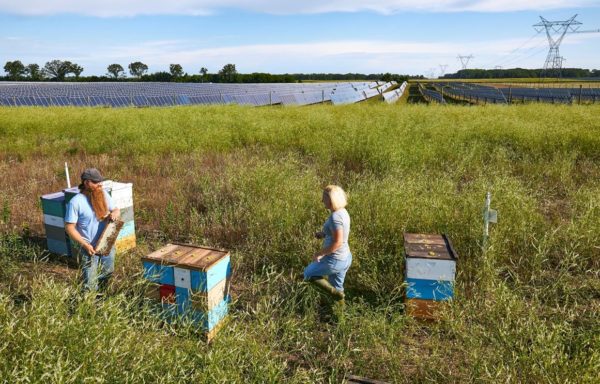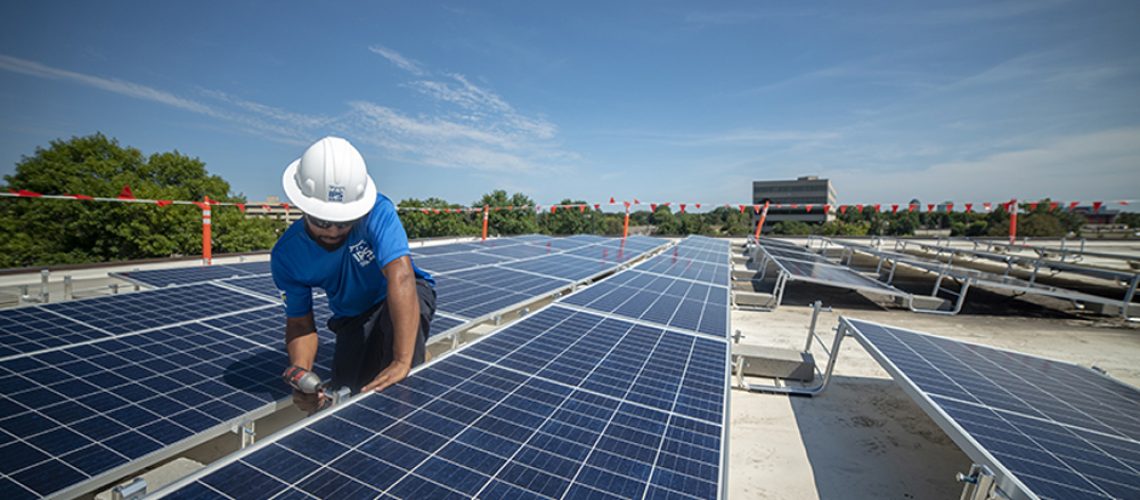Minnesota, known as the Land of 10,000 Lakes, has long been ahead of the curve when it comes to clean energy. Earlier this month Governor Walz signed into law a new climate bill that aims for 100% clean energy by 2040. An ambitious goal, but in keeping with some of the state’s other milestones. For example, the state enacted its first net metering law in 1983. In 2013 it became the first state to establish a community solar law. In 2007 it set its renewable portfolio standard (RPS).
The new climate bill establishes a standard for utilities to supply Minnesota customers with electricity generated or procured from clean energy resources, and it gives them time to ramp up. Beginning at an amount equal to 80% of retail sales for public utility customers in Minnesota is the goal for 2030, and that is expected to increase every 5 years to reach 100% for all electric utilities by 2040. However, investor-owned corporate utilities are trying to block local solar from the process, according to the Institute for Local Self Reliance (ILSR).
“Local solar is crucial to unlocking the maximum benefits of our clean energy transition — resilience, equity, jobs, and energy savings. We can’t let big utilities control the market by blocking rooftop and community solar,” said John Farrell, co-director, ILSR.
Utility challenges aside, Minnesotans are already procuring more of their electricity from renewable resources than from fossil fuels. In 2021, according to the Energy Information Administration (EIA) renewables accounted for 29% of total in-state electricity net generation, coal fueled 26%, nuclear power supplied 24%, and natural gas contributed 21%. Up until 2020, coal was the dominant source, but the tide turned in 2022 when coal supplied less power than renewable sources.
In terms of solar, the Solar Energy Industries Association (SEIA) reports that Minnesota has 1.7 GW of capacity installed, making it 16th in the nation, which is up from 29th in 2021. The state procures 3.6% of the state’s electricity from solar.
State incentives
Minnesota’s RPS, established 16 years ago, requires that the state’s electricity providers, with the exception of the state’s largest utility, generate or procure at least 25% of their electricity retail sales from eligible renewable sources by 2025. The largest utility, which also operates the state’s nuclear power plants, has to meet a higher standard. There is also a goal that solar energy account for 10% of statewide electricity retail sales by 2030. In 2018, the state’s utilities already met the 25% requirement.
Net metering
Net metering is a policy that enables electric utility customers with grid-connected solar to get a credit on their electric bill for the energy they produce from their system. Minnesota electricity customers may net meter, however, the rules vary depending on the utility. With public utilities, the maximum eligible system is 1 MW, and for municipal utility customers it’s 40 kW or less. For investor-owned utilities, systems greater than 40 kW in capacity may be limited to generating a maximum of 120% of annual electric consumption. While there isn’t a cap on net metering, a public utility may request ta limit one generation reaches 4% of the utility’s annual electricity sales. Municipal utilities and electric coops may charge net metered customers additional fees to recover associated fixed costs. Getting compensated for net metering in Minnesota also depends on the customer’s utility.
Compensation is at the average annual retail electricity rate for systems 40 kW in capacity or below. For systems between 40 kW and 1 MW, compensation is at the public utility’s avoided cost rate. Alternatively, any customer can request to be compensated in the form of a per-kilowatt-hour credit, which carries over month to month. At the end of the year, customers of public utilities will be compensated at the avoided-cost rate and customers of municipal utilities and electric coops will have their credits expire.
Community solar
Minnesota’s community solar garden (CSG) program has created over 860 MW of solar in the state and thousands of jobs. According to the Minnesota Solar Energy Industries Association (MnSEIA), the state ranked first in the nation for the largest community solar program for years, but due to outdated rules and gridlocked negotiations, Minnesota has fallen behind and now is second behind New York. Nevertheless, there are over 860 MW of community solar installed in the state as of 2022. MnSEIA notes that “updates to the program are needed to keep Minnesota a leader and create more jobs, economic opportunities, and clean energy across our state”. MnSEIA is working with Xcel Energy, the PUC, and at the Minnesota Legislature to remove the contiguous county restriction, working on community access projects, and much more.
Energy justice
The new climate bill encourages utilities to locate new energy generating facilities in communities where fossil-fuel-generating plants have been retired or are scheduled for retirement and prioritize projects that maximize local employment, including employment of workers from communities where generation has been retired. Additionally, ILSR notes that Minnesota’s community solar program “lacks consideration” for low-income residential subscribers and frontline communities. ILSR recommends that the state address these disparities, suggesting that one option, which can be found in the Illinois community solar policy, is to carve out a portion of program capacity for environmental justice communities.
Landmark solar installation
The North Star Solar Project in Chisago County, Minn. was developed by D.E. Shaw Renewables Investments and came online in 2016. The 100 MW project produces enough electricity to power 19,329 homes and contributes to Xcel Energy’s goal to be 63% carbon free by 2030.

The North Star Project is collaborating with the Minnesota Department of Natural Resources to develop a vegetation plan that incorporates a mix of grasses and flowers on project land that will be beneficial to wildlife and pollinators.
Up next
The last stop on the pv magazine USA tour of state incentives looked at South Dakota, and the next stop will be in Iowa.



